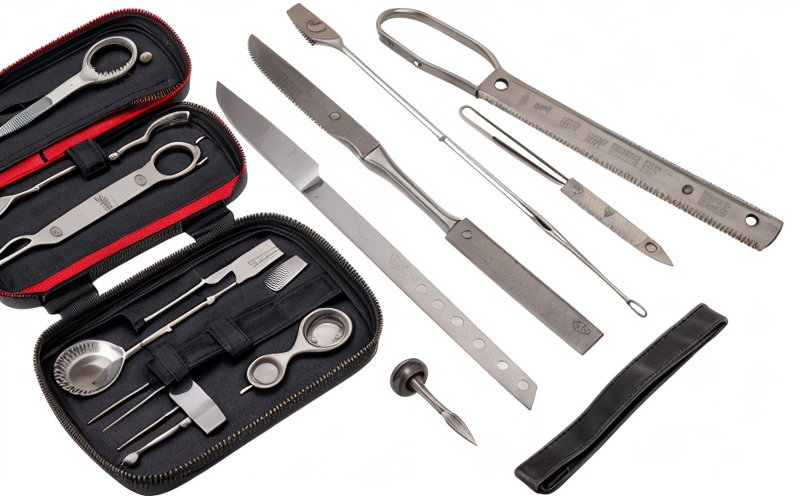ISO 7741 Needle Holder Alignment Testing
The ISO 7741 standard provides a comprehensive framework for ensuring that needle holders in medical devices meet the required alignment specifications. This service is particularly important for surgical instruments and tools where precision and accuracy are paramount. The alignment of needles within these devices can significantly impact patient safety, operational efficiency, and overall performance.
The testing process outlined by ISO 7741 involves precise measurement techniques to evaluate the geometry and position of needle holders. This includes measuring the angle between the needle and the holder shaft, as well as ensuring that the needle is correctly positioned for safe and effective use during surgical procedures. The alignment must be within specified tolerances to prevent issues such as needle breakage or improper insertion.
The testing procedure typically begins with the preparation of the specimen, which involves selecting a representative sample of the needle holder from the batch being tested. This ensures that the test results are applicable to the entire production run. Once prepared, the specimen is positioned in a fixture that allows for accurate measurement using specialized equipment such as laser alignment tools and high-precision gauges.
The testing process itself involves several key steps:
- Measurement of Needle Position: The position of the needle relative to the holder shaft is measured with high accuracy. This requires careful calibration of the measurement equipment to ensure reliable results.
- Angle Measurement: The angle between the needle and the holder shaft is measured using laser-based systems or similar precision instruments. Any deviation from the specified angle can affect the performance of the instrument, potentially leading to complications during surgery.
- Repeatability Checks: Multiple measurements are taken to ensure that the results are consistent and repeatable. This step is crucial for validating the accuracy of the testing process and ensuring compliance with ISO 7741 requirements.
The alignment test results are typically reported in a detailed document that includes all measurement data, tolerances achieved, and any deviations from specified standards. The report also provides recommendations for corrective actions if non-compliance is identified during the testing process.
By adhering to ISO 7741, medical device manufacturers can ensure that their products meet the highest quality standards, thereby enhancing patient safety and surgical outcomes. This alignment testing service is essential for maintaining regulatory compliance and ensuring product reliability in critical applications such as surgery.
Applied Standards
The ISO 7741 standard is widely recognized and applied across the medical device industry to ensure that needle holders are manufactured with precise alignment. This standard has been adopted by regulatory bodies worldwide, including the U.S. Food and Drug Administration (FDA) and the European Union’s Notified Bodies.
- ISO 7741-1: General requirements for precision measurement of needle holders.
- ISO 7741-2: Specific methods for measuring alignment angles.
The standard specifies detailed procedures and acceptance criteria to ensure that the alignment of needles within surgical instruments is accurate and consistent. Compliance with these standards helps manufacturers meet international quality control requirements, ensuring product reliability and patient safety.
Industry Applications
The ISO 7741 Needle Holder Alignment Testing service finds critical application in various sectors of the medical device industry, particularly in the development and manufacturing of surgical instruments. This testing ensures that all components, including needle holders, are manufactured to exacting standards, which is essential for maintaining high levels of patient care.
One key area where this testing is crucial is in the design and production of reusable surgical instruments. These tools must be precisely aligned to ensure optimal performance during sterilization and subsequent use. The alignment test ensures that even after multiple cycles of cleaning and reprocessing, the needle holder remains within acceptable tolerances, maintaining its ability to safely guide needles into the correct anatomical position.
Another important application is in the development of single-use surgical instruments where precision is equally critical. For instance, in laparoscopic surgery, the alignment of the needle holder can directly affect the accuracy and success rate of the procedure. By adhering to ISO 7741 standards, manufacturers can ensure that their products meet the highest quality benchmarks.
The testing service also supports regulatory compliance and preclinical trials for new medical devices. It helps identify any potential issues early in the development process, ensuring that products meet all necessary requirements before entering clinical use or commercialization.





